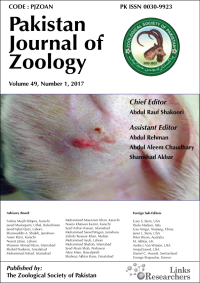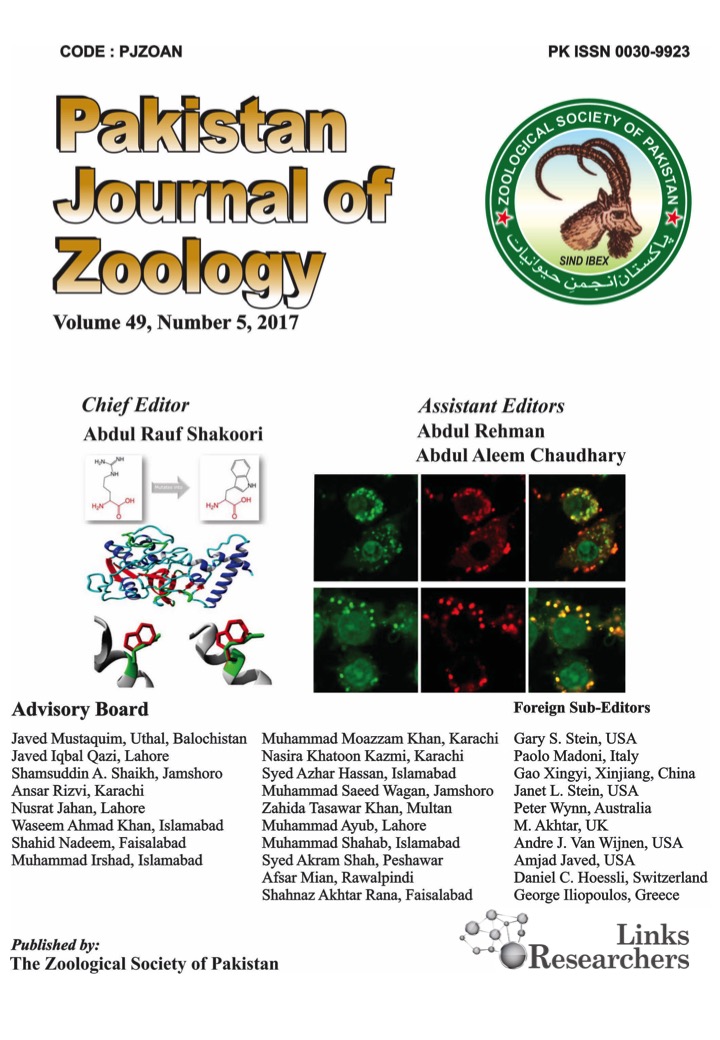Microbial Analysis of Indian Flying Fox (Pteropus giganteus) Ejecta Collected from Two Public Parks in Lahore, Pakistan
Microbial Analysis of Indian Flying Fox (Pteropus giganteus) Ejecta Collected from Two Public Parks in Lahore, Pakistan
Tayiba Latif Gulraiz1, Arshad Javid1*, Syed Makhdoom Hussain2, Muhammad Shahbaz3, Irfan3 and Sharoon Daud4
ABSTRACT
Microbial analysis of Indian flying fox, Pteropus giganteus ejecta roosting at Jinnah and Lalazar Gardens, Lahore was carried out from January, through December, 2011 and a total of twelve fungal and twelve bacterial genera were isolated. Four fungal (Candida, Fusarium, Penicillium and Saccharomyces) and two bacterial genera (Klebsiella and Nocardia) were isolated from bolus only, three fungal (Cryptococcus, Histoplasma and Trichophoton) and six bacterial (Acaligenes, Azotobacter, Bartonella, Nitrsomonas, Pseudomonas and Salmonella) genera were isolated from guano while five fungal (Alternaria, Aspergillus, Chrysosporium, Exophilaand Scopulariopsis) and four bacterial (Bacillus, Corynebacterium, Listeria and Streptomycete) genera were common in bolus and guano samples. Seasonal variations were recorded in occurrence of various fungal and bacterial genera. From bolus samples, two fungal Aspergillus and Fusarium and one bacterial Bacillus genera were recorded throughout the year while from guano Bacillus was the only genus with year round occurrence. Microbial analysis shows that Indian flying fox ejecta are an amalgam of beneficial and pathogenic microbes and its pH (6.7 to 7.4), high concentration of phosphorus (4.50% and 4.33%) and nitrogen (3.26% and 2.37%) favor seed germination, enhance root growth and soil fertility.
To share on other social networks, click on any share button. What are these?










